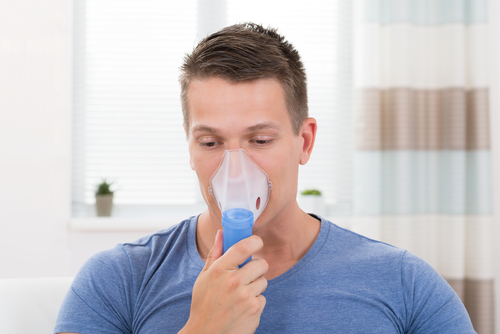Sunovion Pharmaceuticals recently announced data on health outcomes concerning the use of inhaler devices among patients with chronic obstructive pulmonary disease (COPD) at the Society of Hospital Medicine’s 2016 conference in San Diego, California. The results were presented via two posters and emphasized the company’s commitment to advance treatments for COPD and patient care.
The data from the observational studies underscores the need for routine assessment of COPD patients’ ability to use hand-held inhalation devices prior to treatment selection in hospital and community settings.
“At Sunovion, we are committed to understanding how COPD treatments impact patient outcomes in real-world settings,” Krithika Rajagopalan, vice president and head of Global Health Economics and Outcomes Research at Sunovion, said in a press release. “The more we understand about the relationship between device selection and its association with patient satisfaction and health status in the complex world of COPD treatment and management, the greater difference we can make in developing medications and device-drug combinations that can improve patients’ lives.”
The first study was titled “Confidence in correct inhaler device technique and its association with health status and patient satisfaction: an analysis of real-world U.S. chronic obstructive pulmonary disease (COPD) patients.” Researchers collected data from a 2013 U.S. survey dataset of COPD patients from primary care physicians and pulmonologists. Physicians completed patient record forms on five consecutive COPD patients seeking routine care consultation. The same patients were invited to complete a questionnaire about their disease. Assessments included physician reports on patient characteristics (demographics, disease severity, comorbidities), physician and patient reports on patient confidence of correct inhaler usage, patient satisfaction, health status measures including EuroQOL-5 Dimension (EQ-5D) utility and visual analogue scale (VAS) scores, and COPD Assessment Test (CAT).
The results showed that poor inhaler confidence levels were reported by physicians and patients in at least one in three COPD patients regardless of the type of device. The team suggested that such low confidence in using inhalers, as well as an incorrect technique in using the device, may be linked to a reduction in COPD patient satisfaction and in poorer COPD-related health status.
The second study was titled “Analysis of real-world treatment patterns among hospitalized chronic obstructive pulmonary disease (COPD) patients with low peak inspiratory flow: interim findings from a prospective observational study.” Researchers collected data from the first 111 patients enrolled in a prospective observational study at seven U.S. sites. Patients were enrolled when they were discharged from the hospital following treatment for a COPD exacerbation.
Peak inspiratory flow rate (PIFR) was measured using the InCheck Dial to simulate resistance of the Diskus dry powder inhalers (DPI). Patients were classified into low PIFR (less then 60 L/min) or normal PIFR (equal to or greater than 60 L/min) cohorts. Data was collected regarding COPD treatments before, during, and after hospitalization, baseline demographics, clinical characteristics, and COPD-related health status.
Interim results showed that one in every four COPD patients discharged from a hospital after treatment for a flare-up reached a PIFR of less than 60 L/min using resistance of the Diskus device. Nevertheless, 70 percent of COPD patients with PIFR of less than 60 L/min were receiving medications via DPIs, including Diskus, at discharge. This data suggests that patients with COPD may have difficulty experiencing optimal PIFR using the most common inhaler devices.
The findings strongly indicate that routine PIFR evaluations in COPD patients before they are discharged from the hospital may help guide decisions on appropriate treatments to improve their care.

